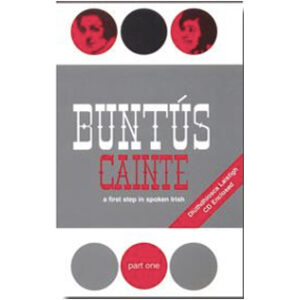Autonomous Form
Affirmative Statements
In making affirmative statements in the Autonomous Form, some changes are always made at the end of the verb. First, identify the root of the verb as follows:
1. For the majority of First Conjugation (usually one syllable) verbs, the entire verb is the root. Please refer to the samplaí (examples) in the chart below. An exception is when the verb ends with “igh”. In that case, if there is an accented vowel immediately before the “igh”, simply drop the “igh” to expose the root. In all other cases, delete the “igh” and replace it with an “í”. Please refer to the samplaí (examples) in the chart below. Also, be aware that there are a few two syllable verbs in the First Conjugation which maintain two syllables in the root. Please refer to the samplaí (examples) in the chart below.
2. For the Second Conjugation (usually multi-syllable) verbs, part or all of the end of the verb is generally removed to reveal the root. Whenever these verbs end in “(a)igh” (the most common type), simply drop that syllable. Please refer to the samplaí (examples) in the chart below. In most other cases, squeeze the vowels out of the last syllable and tack the remaining consonant(s) onto the end of the first syllable. For example, with the verb “codail”, squeeze the “ai” out of the second syllable and add the remaining “l” to the end of the first syllable to make the root – “codl…”. Please refer to the samplaí (examples) in the chart below.
Second, to the root add these endings:
1) For First Conjugation verbs, add:
If last vowel in root is | ‘e’ or ‘i’ | a’, ‘o’ or ‘u’ |
Past Tense | …eadh | …adh |
Present Tense… | …tear | …tar |
Future Tense… | …fear | …far |
Conditional Tense… | …fí | …faí |
Past Habitual Tense… | …tí | …taí |
2) For Second Conjugation verbs, add:
If last vowel in root is | ‘e’ or ‘i’ | a’, ‘o’ or ‘u’ |
Past Tense | …íodh | …aíodh |
Present Tense… | …ítear | …aítear |
Future Tense… | …eofar | …ófar |
Conditional Tense… | …eofaí | …ófaí |
Past Habitual Tense… | …ítí | …aítí |
Conditional and Habitual Past
Conditional and Habitual Past tenses will also require changes at the begining of the verb. Start with the basic verb and séimhiú (add an “h” after) an initial consonant if it is a: B,C,D,F*,G,M,P or T. (In other words, all consonants except L,N,R and sometimes S.) Séimhiú (add an “h” after) an initial ‘S’ only if the following letter is a vowel or an L,N or R. Otherwise, leave an initial ‘S’ unchanged. An initial L,N or R always remain unchanged. Add “D'” before an initial vowel or an initial ‘F*’.
Negative Statements and Questions
Negative Statements and Questions are made in the autonomous form by adding verbal particles before the verb, and often by also making changes to the beginning of the affirmative statement form. The rules follow according to the tense (except for the Past Tense, where séimhiú is not used!). See the appropriate rules listed on the other pages here for the tense needed.
*Note: When ‘F’ takes a séimhiú it becomes silent so that the first sound heard in the verb is the following vowel. Because of this, “D'” is added before “fh” as though the verb started with a vowel.
Please refer to the samplaí (examples) in the chart below.
